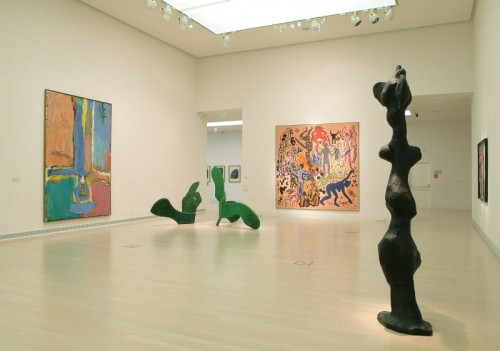Living in New York since 1992, Aleksandr Petrov graduated at the Stroganov Moscow State University of Arts and Industry in 1971. From the following year he was a regular participant at various exhibitions across the Soviet Union, then the “export exhibitions”: his works had already been around the Netherlands, Finland, Turkey and Japan before the democratic transition. In his own words, Petrov had already fought against decorativeness and conventions as a student, his motto being: “The world, just as it is.” His interest was far from poetic and from capturing the imaginary. He thought that everything inher¬ently contains its own negation and demise. “My most important goal is to explore this deepest contradiction of the world,” he said in 1981. Having had strict traditional training, the technical virtuosity of the painter was revealed early on. In terms of his art, he felt close to the Dutch school – with a predilection for capturing various textures. The diptych Airport is an excellent example of recording reflections outlined on mirrors or windows, which were in the focus of his interest. On the one hand, he used them to extend the space, and on the other hand, he meant to call attention to “everyday semblances”. Petrov was actually unaware of the endeavours of “Western” photorealism, while having a significant role in the emergence of nonconformist hyper-and photorealist painters later on. He was a member of the Union of Artists of the USSR, but he had very close ties with the “left wing” of the union, similarly to Natalya Nesterova: although these artists were considered as “official”, their approach was rather nonconformist, their goal being a greater freedom of artistic expression.

